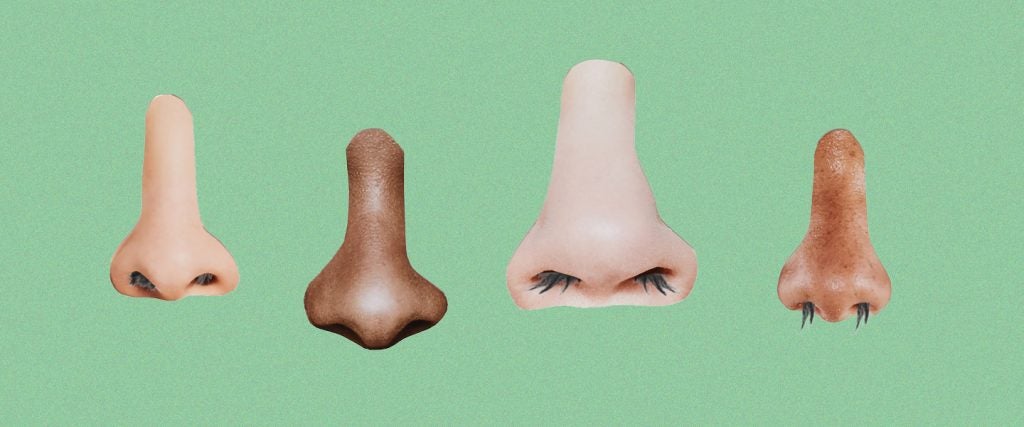I come from a long line of hairy schnozes. My dad’s got a hairy schnoz, his dad had a hairy schnoz, and by golly, if every few days I don’t wake up to a thick cord of hair hanging below my nostril like an abandoned mountain climbing rope. Usually, I pluck the strand, embrace the sting of that pain and go on with my day.
Recently, however, I went a little overboard. I not only plucked every strand I could get my tweezers on, but mowed the rest down with my nifty nose-hair trimmer. And while it might just be the changing seasons, I have to wonder if my particularly bad allergies of late have anything to do with my freshly landscaped nostrils.
According to Mat Rezaei, a pharmacist in Vancouver, my suspicion was correct. “Nose hair is the first defensive wall that protects the throat and eventually the lungs from dust and harmful molecules, such as germs, fungus and spores,” he tells me, adding that by essentially giving myself a Brazilian nose-wax, I’d put myself at greater risk of suffering an allergy attack. “Scientists from Hacettepe University School of Medicine found that people with dense nose hair are less likely to have asthma than those with less-hirsute nostrils,” Rezaei explains. “Strands of hair in the nose bring more humidity to the inhaled air, which is a crucial external element in the respiratory system — the mucus and hair add heat and moisture as the air travels through the nasal passages.”
So having hair in your nose is a health advantage. But how am I supposed to balance that with my undying need to maintain a fresh physical appearance? “If trimming nostril hair helps you feel more comfortable in your own skin, then that’s okay,” Rexaei says. He is sure to add, though, “Just be sure to avoid fully removing everything.”
Luckily, finding the middle ground between trimming all your nose hair and letting a full-on air plant sprout from your nostrils is simple. “Stick to rotary clippers or mechanical trimmers, and trim any dense hairs up to the orifice of the nostrils,” Rezaei says. “But again, avoid over-trimming the inside of your nasal cavities as well.” Even worse than over-trimming is plucking individual hairs out. “Using tweezers to pluck nose hairs can lead to infection or irritation from ingrown hairs,” Rezaei continues, “which are common and very painful.”
All of which is to say, as I sit here, all the debris and germs that would otherwise accumulate into boogers trapped in my nose hair, are going straight into my lungs. Would I even be alive today had it not been for the very lineage of hairy schnozes I once decried?
From this point forward, I will never again forsake this hirsute sniffer that allowed my ancestors to survive brutal conditions. Nary a scissors or a tweezer will come within arm’s length of my delicate nostrils. I can only hope my fellow hairy-schnozzed brethren will do the same.

